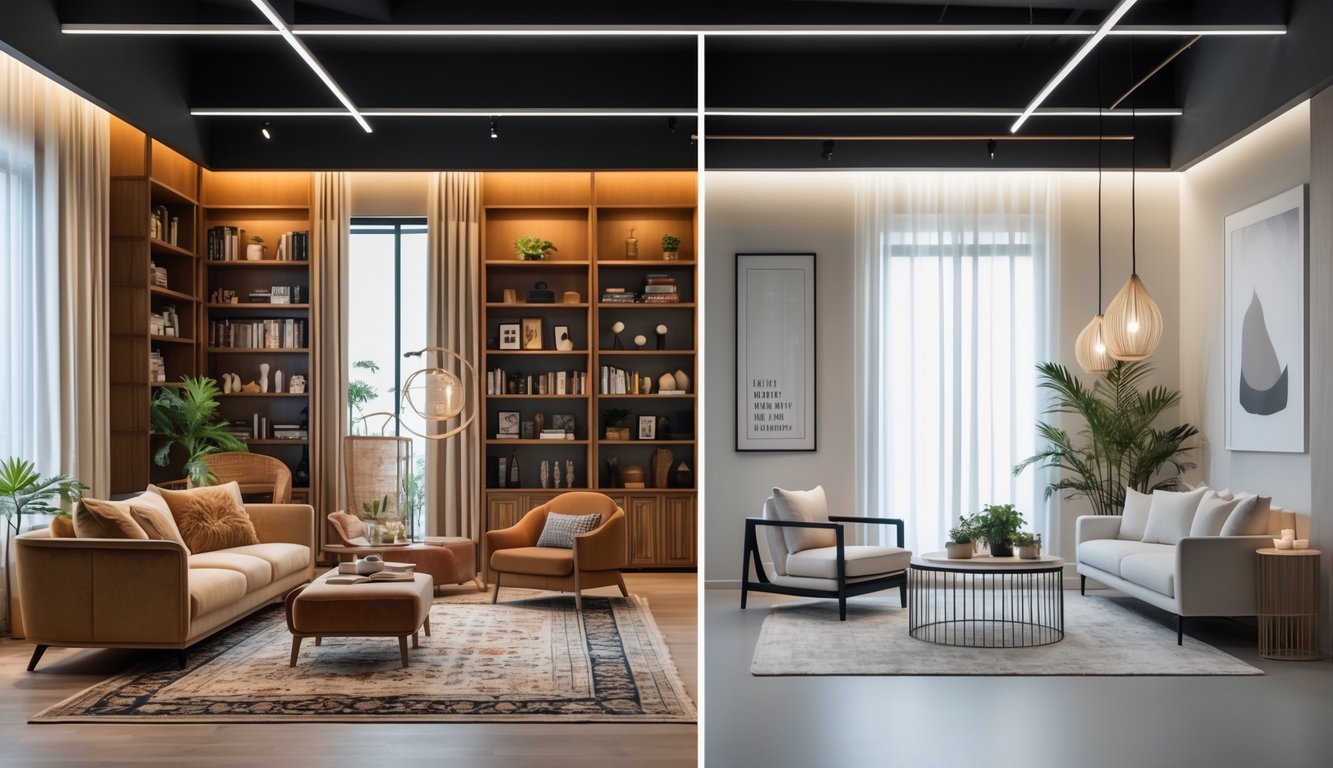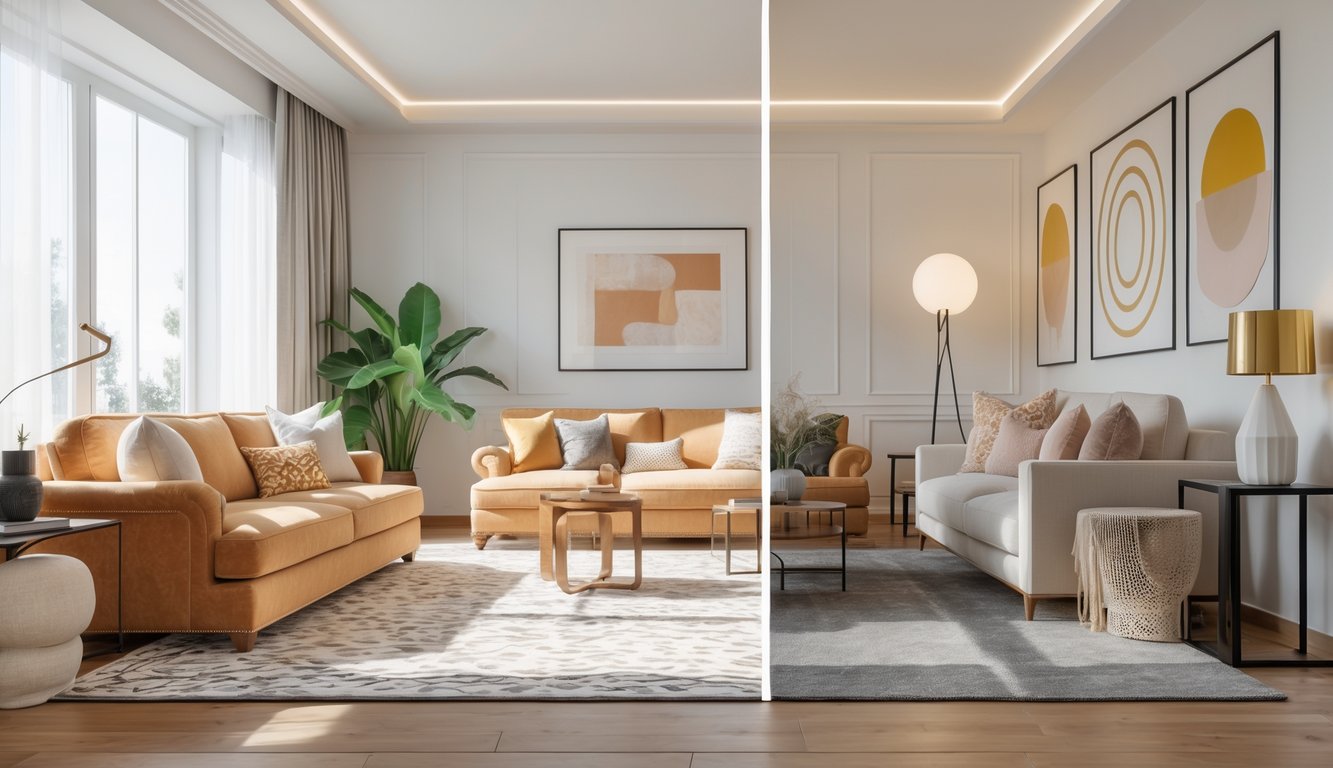
Scrolling through Instagram—wait, what’s with the moody dark wood takeover? Did I black out and miss a global memo, or did everyone just decide light oak is embarrassing now? Not long ago, every designer was raving about pale, breezy vibes. Now, apparently, if your living room isn’t dripping in walnut or espresso, you’re out. I swear, trends don’t even bother with subtlety anymore; they just bulldoze whatever you liked and leave you standing there clutching your old coffee table like a relic. Some HGTV person I used to trust is yelling about “depth” (translation: buy more stuff), and I overheard my neighbor’s dog walker debating wood stains. I mean, really?
And now, industrial style’s next to get axed? At least, that’s what half of House Digest seems to think. “Cozy warmth” is the new gospel, just as I finally tracked down concrete planters that didn’t look like sad flower pots. Nobody can explain why, not without tripping over their own advice from last year. They mutter about “personality” and “lived-in energy”—which, let’s be honest, is just scented candles and a pile of throw blankets. I’m still tripping over the bouclé chair TikTok bullied me into buying. Is that doomed now too? Probably.
Whatever. Nobody cared what your house looked like before reels, but suddenly open kitchens and “vanilla girl” neutrals are embarrassing, and every “expert” is making predictions. Newsweek has designers declaring the death of open shelving, which is hilarious because my plates have never matched. Maybe I’ll throw up a shiplap wall just to be spiteful. Now, apparently, if your space looks too coordinated, you’re a try-hard. Why do I even bother catching up when the whole thing’s a moving target?
Why Decor Trends Shift So Quickly

Every time I finally buy a lamp I like or splurge on that “perfect” mineral paint, TikTok or my cousin pops up to tell me it’s cringe now. Furniture, colors, hardware—nothing’s safe. It’s not just me, right? People drop trends (bouclé, matte black, terracotta, all of it) the minute something shinier gets shoved in their feed. Designers even admit it—The Spruce has them regretting their own picks before the paint dries.
The Influence of Pop Culture
Celebrity home tours? Suddenly, velvet couches everywhere. Euphoria airs—bam, LED strips in every dorm. People copy whatever’s on TV or Instagram, because why not? Last summer, checkerboard rugs were “it” after Bella Hadid posted one—except, didn’t Tumblr already do that in 2013? Everything old is new, until it isn’t, and then it’s old again.
It’s not even subtle. Set designers, brands, whoever—they plant these ideas on purpose just to see what takes off. It’s all urgency and “you’ll regret missing this,” so everyone gets FOMO and tosses out their old stuff. Even the people making the mood boards for Architectural Digest admit they’re basically stalking red carpets and pop stars for ideas instead of, you know, history.
The Role of Social Media in Trend Acceleration
There’s no off switch. TikTok spits out makeovers faster than I can finish a cup of coffee. “Dupe” culture means if something looks expensive on an influencer’s grid, it goes viral before you can blink. Even pros on Pinterest warn that word sign wall art is now a red flag—“Live, Laugh, Love” isn’t coming back, sorry Mom.
Brands panic and chase the trend, but by the time your package arrives, it’s all over the next viral video. It’s a feedback loop: one viral trend gets so loud that every store stocks it. I started seeing sage green “cozy minimalism” everywhere—rental listings, staged apartments, even my dentist’s office. It’s not taste, it’s a glitch.
Consumer Psychology and the Desire for Change
People get bored, I guess. Retailers literally see sales dip when nothing new is trending; that’s not a theory, it’s in the 1stDibs and Houzz reports. Who hasn’t glared at their old throw pillows after seeing a “fresh” living room on TikTok?
I’ll admit it: I swapped my brass hardware for matte black because I thought it’d fix my kitchen ennui. It didn’t. That’s the whole game—everyone wants something new, even if they regret it by next month. Economists have a fancy phrase for it, “paradox of choice,” but honestly, it’s just tiring unless you’re addicted to rearranging your couch. Why did I buy a macramé wall hanging? Probably just to break up the monotony. Now it’s just a dust magnet, next to my useless air fryer.
The Rise of Minimalism and Its Waning Popularity
Bare counters everywhere. People didn’t just declutter; they erased themselves. Sometimes I wonder if anyone even owns more than two mugs now. But trends never sit still, so the urge to strip everything away has already been replaced by something else—something a little messier, honestly. Kind of nostalgic for all the junk we threw out.
What Made Minimalism So Appealing
What still gets me is how quickly everyone ditched their collections for blank space. Marie Kondo says, “Spark joy,” and suddenly, every souvenir is in a donation bin. Designers like John Pawson built houses allergic to color—voids instead of rooms, basically. It worked for a while. Less stuff, less stress, or so they said.
Instagram, of course, made it worse: white Eames chairs, linen bedding, no sign of pets or coffee stains. Simplicity felt like rebellion against chaos. Science even backed it up—some Journal of Environmental Psychology study said clutter raises cortisol. So yeah, it wasn’t just about design, it was about pretending your brain would be calmer if your bookshelves were empty. For a while, buying into minimalism felt like a cheat code for adulting.
Why Stark Minimalism Lost Its Charm
Then I sat in a living room so blank, I forgot what I was doing there. Stark minimalism? Gets old. Fast. White walls, empty counters, nothing but a sad little plant. Was this a home or a waiting room? Even influencers say it got performative—like we were shopping just to display nothing, according to this critique.
Guests come over and whisper, “Do you live here?” And the emotional cost? Real. Minimalism meant ignoring real life—kids, hobbies, ugly but necessary stuff. Critics (see Artless) say all that stripping away didn’t always add joy; sometimes it just erased the story from your space. One stain, and the whole illusion falls apart. I couldn’t even find a pen half the time.
How Minimalism Is Being Reimagined
Nobody’s a purist anymore. Even the die-hards. Now it’s “warm minimalism” all over Pinterest—which, honestly, is just minimalism with more beige and some plants. Designers admit nobody lives with zero clutter. People want “visual interest,” even if it’s just a magazine rack or that weird lamp from Grandma.
Brands hawk Scandi furniture but call it “cozy minimalism,” which feels like cheating. Now it’s about buying fewer, better things—buying being the key word, which you can see in the Homes and Gardens piece. The rules shifted: minimalism is about what you keep, not what you toss. And nobody’s tossing the junk drawer.